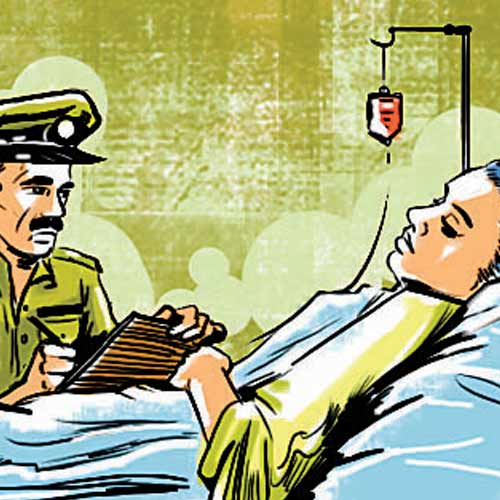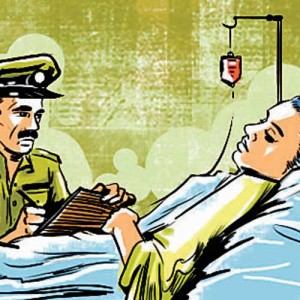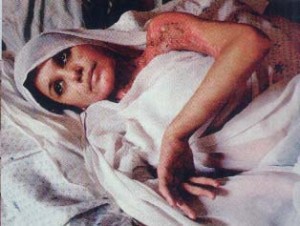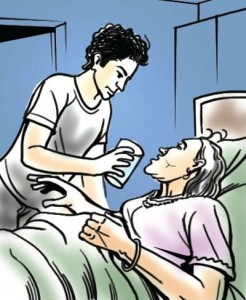In this blog post, Nimisha Srivastava, a student of Gujrat National Law University, Gandhinagar, writes about the importance of dying declaration as substantive evidence in burn cases.
The Supreme Court has recently ruled that in situations where more than one dying declaration exists, the Court should satisfy themselves as to which one reflects the truth.[1] The judgment came in a 27 year old case of burn victim who was set ablaze by her lover after she asked him to marry her. The Bombay High Court had convicted and sentenced the accused in 1989, by relying on two of three dying declarations given by the victim. The decision by Apex Court lays down the rules to avoid misuse of the provision by the relatives of the victim for harassing the accused in question.
A dying declaration is substantial evidence in cases where a person makes a statement related to the circumstances which resulted in his death. Hearsay evidences are usually not given any weightage by the courts because the person cannot be cross examined to verify the statements made by him. Dying declaration is an exception to the rule of hearsay evidence because if the person who has made the statement is the only witness available and his statements are not considered as dying declaration, then it would defeat the very purpose of Justice. Another reason is that, a person lying on his death bed hardly lies about the causes of his death. The dying declaration is the “most mystical in its theory and the most arbitrary in it limitations.”
It is based on the principle that dying declarations are made in the extremity when the party is at the point of death and every hope of the world has gone and every motive of falsehood is silenced, and mind is induced by the most powerful considerations to speak the truth. Dying declaration forms the sole basis of conviction if it is free from any kind of doubt and if it has been recorded in the manner as provided under the law.
Bride burning has been in prominence in recent past in India. Cases of burning woman have emerged due to dowry demands or domestic violence or mental cruelty. In few cases, the women commit suicide by self immolation due to these factors. In most of these cases, the prosecution’s case solely rests on the dying declaration given by the deceased. In these sorts of cases, it becomes difficult to gather evidence against the accused persons i.e. husband, his family and relatives. In words of Justice Krishnaiyer, ‘To discredit such dying declarations for shortfalls here or there or even in many places is unrealistic, unnatural and unconscionable if basically there is credibility.’ [2] On the downside, there has been a trend of misusing dying declaration to falsely implicate the family of the husband, so it becomes hard to test whether the dying declaration given by the woman is trustworthy or not.
In India, Section 32 of the Indian Evidence Act, 1872 deals with cases related to where a person is dead or is not found.
Relevant facts
The principle behind this Section is that the statement can either be written or verbal, or relevant facts made by a person who is dead, or who cannot be found, or who has become incapable of giving evidence, or whose attendance cannot be procured without an amount of delay or expanse which, under the circumstances of the case appears to the court unreasonable are themselves relevant facts in the following cases:
- When it relates to the cause of his death;
- When it is made in the course of the business;
- When it is against the pecuniary or propriety interest of the person making it;
- When it gives opinion as to public right or custom or matters;
- When it relates to the existence of any relationship;
- When it is contained in any deed, will, or other document;
- When it is made by several persons and expresses relevant feelings to matter in question.
In Paniben v. State[3], principles with respect to dying declarations were laid down. The deceased was sleeping all alone in the `osri’ of the House. The accused went there, poured kerosene on her person, and as the deceased got up, the accused lit the fire and left the `osri’. The accused in this case was the mother-in- law. Here, the court analyzed the existing jurisprudence on Section 32(1) and came to following conclusions:
- There is neither rule of law nor of prudence that dying declaration cannot be acted upon without corroboration.
- If the court is satisfied that the dying declaration is true and voluntary it can base conviction on it, without corroboration.
- The court has to scrutinize the dying declaration carefully and must ensure that the declaration is not the result of tutoring, prompting or imagination. The deceased had opportunity to observe and identify the assailants and was in a fit state to make the declaration.
- Where dying declaration is suspicious, it should not be acted upon without corroborative evidence.
- Where the deceased was unconscious and could never make any dying declaration, the evidence with regard to it is to be rejected.
- A dying declaration which suffers from infirmity cannot form the basis of conviction.
- Equally, merely because it is a brief statement, it is not to be discarded. On the contrary, the shortness of the statement itself guarantees truth.
- Normally, the court in order to satisfy whether the deceased was in a fit mental condition to make the dying declaration looks up to the medical opinion. But where the eyewitness has said that the deceased was in fit and conscious state to make this dying declaration, the medical opinion cannot prevail.
- Where the prosecution version differs from the version as given in the dying declaration, the said declaration cannot be acted upon.
- Merely because a dying declaration does not contain the details as to the occurrence, it is not to be rejected.
The court attaches great importance to a dying declaration, if properly recorded keeping in mind all the essential ingredients, it can form the basis of conviction. The court, through various judgments and pronouncements have expanded the scope of Section 32(1), laid down rules regarding the procedure of recording dying declaration, rules for admissibility etc. With respect to the growing incidents of atrocities among women, this piece of law provides the opportunity to deceased to seek justice from those who wronged her. It is a very sensitive topic involving various social, legal, ethical and moral aspects. There is a downside to this aspect that the over-enthusiasm in seeking the conviction of people and roping in relatives sometimes ends up weakening the prosecution against the real culprits. In some cases, in-laws and other relatives cannot be held responsible for the deeds of the husband, and cannot be held guilty for dowry death unless specific acts are attributed to them. Sometimes the family of the deceased in lieu of extorting money from the husband and his relatives misuses this provision. The court needs to see the facts in each case and after careful consideration only, when the dying declaration proves the guilt of the accused beyond reasonable doubt, convict the accused.
Footnotes:
[1]http://www.business-standard.com/article/pti-stories/courts-should-see-which-dying-declaration-reflects-truth-sc-116063000999_1.html
[2] Som Nath v. State Of Haryana, 1980 AIR 1226
[3] (1992) 2 SCC 474
 Serato DJ Crack 2025Serato DJ PRO Crack
Serato DJ Crack 2025Serato DJ PRO Crack














 Allow notifications
Allow notifications



